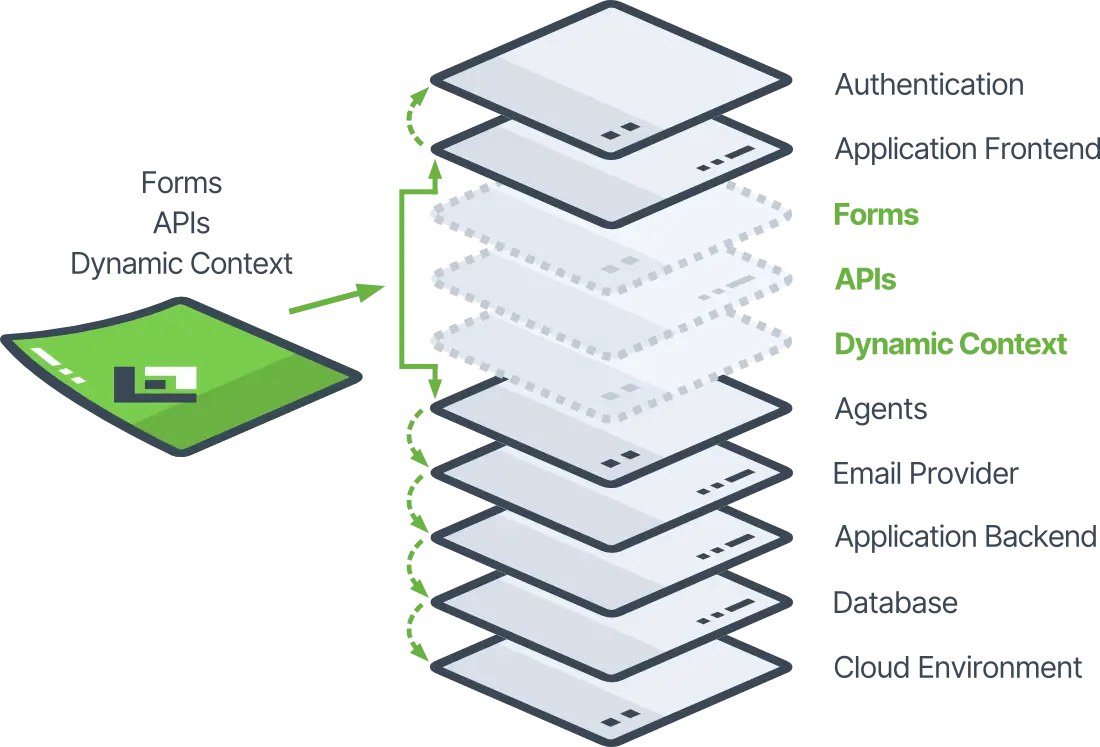
AI Agents in enterprises need to:
But teams are hitting the same walls every time:
They DON'T have a model problem.
They DO have a context, control and integration problem.
It doesn't have to be this way.
* "Accountable Acceleration: Gen AI Fast-Tracks Into The Enterprise." Wharton Human-AI Resaerch and GBK Collective, October 2025
Most enterprises trying to solve the AI agent problem are faced with one of three unattractive paths:
Train Your Own Fleet of Task-Specific Models
Lock into a Monolithic "Do Everything" Agent Platform
Build Custom MCP Servers and Agent Services for Each Use Case
What if there was a fourth path?

Form.io has spent a decade helping enterprises standardize mission-critical workflows on JSON-driven forms, APIs, and RBAC.
The Universal Agent Gateway (UAG) takes that same JSON foundation and uses it to:

With UAG:

UAG inverts the model:
When you've already configured:
UAG treats these as the binding set of rules for agents:
UAG is effectively a form renderer for AI agents. It interprets your Form.io JSON the way your applications do, and exposes it as dynamic, precise context through MCP tools.
With UAG:
You don't retrain a model to add "Preferred Language" to an onboarding flow.
You update the form, and the agent, via UAG,knows:
This is the first time enterprises can iterate on agent logic the same way they iterate on forms.
With UAG, agents:
Every step is:
So instead of praying your "AI middle layer" behaves, you're operating inside a governed, auditable architecture you already trust.
Instead of building your own agent-service per use case, UAG gives you:
Your developers work with skills and patterns they already know:

A user OR an automated function sends a request to a UAG-enabled agent:
What happens with UAG in the loop:

For years, enterprises across insurance, government, healthcare, banking, and large corporate IT have used Form.io to:
UAG is a direct extension of that proven foundation into the era of agentic AI:
If you’re a CTO, Head of Platform, or senior engineering leader, you’re under pressure to:
UAG is built to let you say “yes” to AI agents without saying “yes” to chaos:
Without starting over. Advance the the system you've already built into an AI-native future with a platform that's fully deployed in your enterprise environment.
